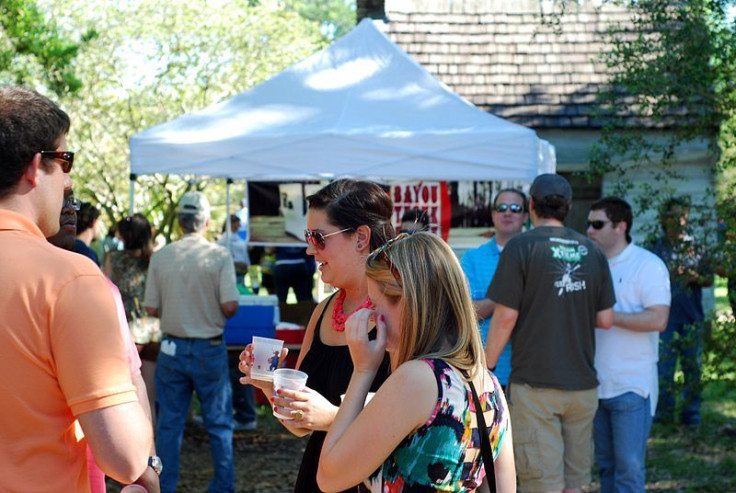Teen Binge Drinking: 1 In 10 High School Seniors Admit To Consuming A Minimum Of 10 Drinks In A Row

Alcohol is one of the most widely available drugs on the market consumed by teens, contributing to more than 4,700 deaths of underage youth, according to the Centers for Disease Control and Prevention (CDC). Although the minimum legal drinking age in the United States is 21, teenagers still manage to get a hold of alcohol and get intoxicated at dangerous levels. While binge drinking rates have decreased among adolescents, one in 10 high school seniors still engage in extreme binge drinking, according to a recent study.
Findings published in JAMA Pediatrics reveal a drop in teen binge drinking as extreme drinking levels hold steady in high school seniors. Researchers sought out to document extreme drinking in a national sample of more than 16,000 high school seniors who were asked to fill out questionnaires on their behaviors, including how much they drank two weeks prior to the survey. The group of high school seniors was broken down to be 64.5 percent white, 11 percent black, 13.1 percent Hispanic, and 11.5 percent other.
In the study, binge drinking was defined as drinking over five drinks in a row. Extreme binge drinking was classified as drinking 10 to 15 drinks in a row. The drinks were defined as 12 ounces of beer, four ounces of wine, 12 ounces of a wine cooler, a mixed drink, or a shot of liquor.
Approximately one in five (20.2 percent) seniors involved in the study reported binge drinking within the past two weeks, while 10.5 percent drank over 10 drinks and 5.6 percent admitted to drinking over 15 drinks. The researchers also found that high school boys were more likely than girls to engage in all levels of binge drinking.
Geographically, the team found extreme binge drinking rates were higher in the South than in the Northeast and West, and reportedly higher in rural areas than in urban ones. When the researchers evaluated binge drinking patterns among ethnic groups, 12.5 percent of white teenagers had 10 or more drinks in one sitting compared to 3.2 percent of black students and 7.7 percent of Hispanics, reports MedPage Today.
"The documented rates of extreme binge drinking, and the fact that they have not changed across recent historical time, support the need for additional research to develop effective prevention and intervention strategies to reduce high-risk alcohol behaviors of youth," wrote the authors.
Binge drinking in adolescents has seen an overall decrease since the late 1970s and early 1980s, and has continued to decline since 2005. However, extreme binge drinking has not shown any decline since 2005, remaining steady.
Consuming "high levels of alcohol at this age can alter brain development,” said Megan E. Patrick, Ph.D., lead author of the study.
The human brain continues to develop into a person’s early 20s, and the consumption of alcohol during this time can cause short- and long-term damage to brain growth. Teens who suffer from blackouts, memory loss, and alcohol poisoning are more likely to cause damage in their ability to remember things in the future, according to Mothers Against Drunk Driving. While all parts of the brain are negatively impacted by teen extreme binge drinking, memory function is hit the hardest.
By age 15, half of teens have had at least one drink. By age 18, more than 70 percent of teens have had at least one drink, according to the National Institute on Alcohol Abuse and Alcoholism.
To learn how you can prevent teenage binge drinking, visit the Center on Alcohol Marketing and Youth by the John Hopkins Bloomberg School of Public Health.
Published by Medicaldaily.com



























